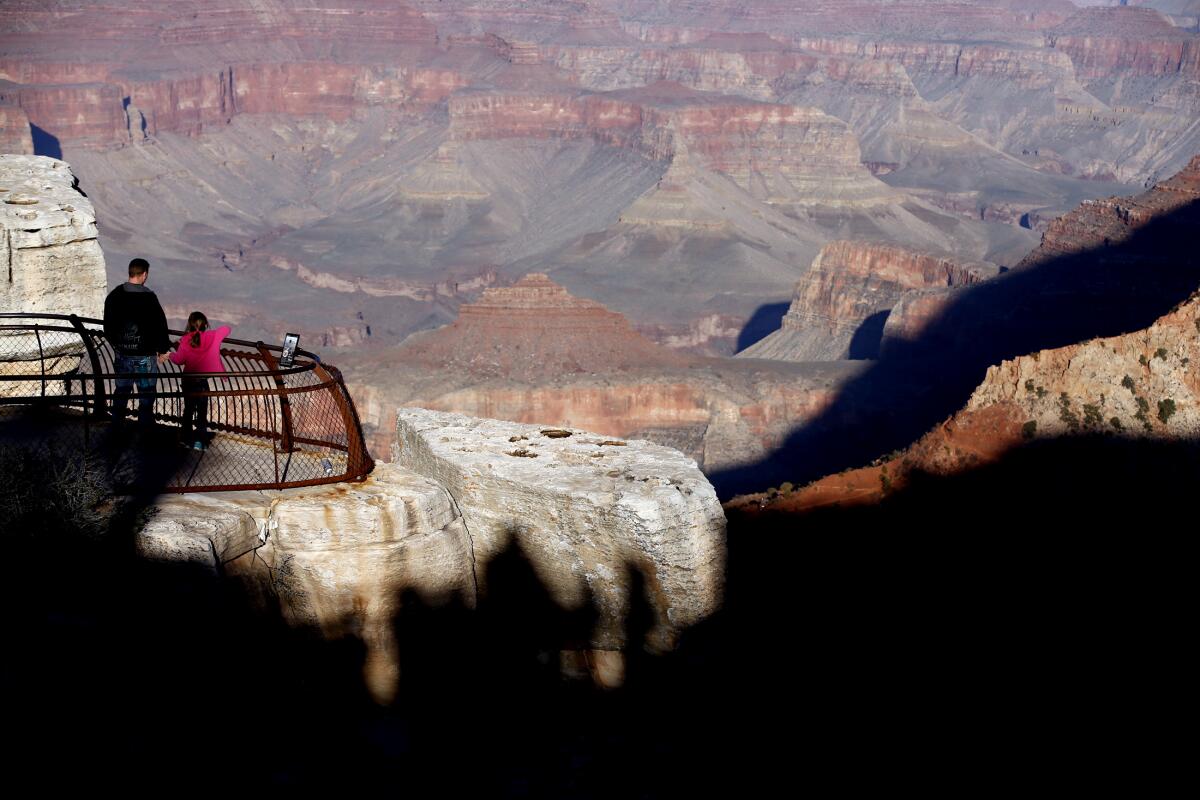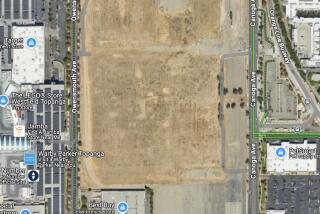Uranium levels deemed safe in water samples around Grand Canyon, study finds

- Share via
FLAGSTAFF, Ariz. — Most springs and wells in a vast region of northern Arizona known for its high-grade uranium ore meet federal drinking water standards despite decades of uranium mining, U.S. scientists found.
The highest concentrations of uranium were found at several sites downslope from an abandoned mine within Grand Canyon National Park. Further investigation is needed to determine whether the contamination is directly linked to the Orphan Mine, the U.S. Geological Survey said.
“The proximity of the mine to the spring, that’s our working hypothesis. We can’t say definitively. We need to look for other things,” said Fred Tillman, a USGS research hydrologist.
The study released this month is part of an effort to better understand the complex geology and hydrology of a region where roughly 1,562 square miles outside the Grand Canyon were put off-limits to new mining claims until 2032.
The Obama administration implemented the ban in 2012, partly out of concern that new mining operations could spoil the Colorado River, which runs through the Grand Canyon.
Companion bills in the U.S. House and Senate seek to make the withdrawal permanent.
The Geological Survey sampled 206 sites — 180 springs and 26 wells — over the last 20 years and found many of them had uranium concentrations below the federal maximum drinking water standard. A previous study determined one spring near a former mine probably was contaminated by naturally occurring uranium.
Near the Orphan Mine, uranium concentrations were up to 10 times higher in springs than what the U.S. Environmental Protection Agency has deemed safe for drinking, USGS found. It started as a copper mine but also produced silver, vanadium oxide and uranium ore before it closed in the late 1960s.
Both environmentalists and Energy Fuels Inc., which has a uranium mine on standby south of the Grand Canyon, used the recent Geological Survey study to bolster their own claims.
“It just confirms everything we’ve been saying all along, that modern uranium mining on breccia pipes in that region does not affect groundwater,” Energy Fuels spokesman Curtis Moore said.
Amber Reimondo of the environmental advocacy group Grand Canyon Trust said there’s still uncertainty about the flow of groundwater in the area.
“It’s great to know some baseline data for the 206 sites they studied, but beyond that, it’s not conclusive,” she said.
Supporters of the permanent ban on mining claims point to the legacy of death and disease that uranium mining left on the Navajo Nation.
Workers extracted the ore known as yellow cake for use in Cold War weaponry, and many became sick and died from prolonged exposure. The effects have reverberated through generations of Navajos.
The Havasupai Tribe, whose reservation lies at the bottom of the Grand Canyon, also has said it fears its water will become unusable if uranium mining resumes.
Part of the difficulty in connecting mining operations to contamination comes in not knowing how uranium travels through water systems and when it might show up. Tillman said it could take hundreds to thousands of years to show up in springs.
Wells are also a better source for sampling than springs, but the USGS hasn’t received the $8 million to $10 million it would need to drill wells.
“We do what we can with the funding we receive,” Tillman said. “We know a tremendous amount more than we did then. Would additional wells be welcome? Absolutely.”
More to Read
Sign up for Essential California
The most important California stories and recommendations in your inbox every morning.
You may occasionally receive promotional content from the Los Angeles Times.










